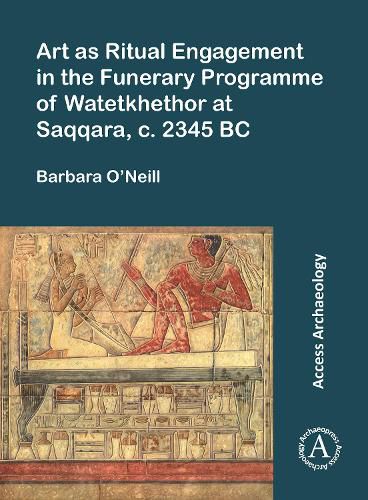Readings Newsletter
Become a Readings Member to make your shopping experience even easier.
Sign in or sign up for free!
You’re not far away from qualifying for FREE standard shipping within Australia
You’ve qualified for FREE standard shipping within Australia
The cart is loading…






Art as Ritual Engagement is examined through a case study of feminised funerary representation in the repertoire of Watetkhethor, an elite woman interred in the mastaba tomb of her spouse, Mereruka, at Saqqara, c.2345-2181 BCE. The focus is centred upon the functionality of a particular form of gendered imagery in a ritualised, funerary context. The spaces and images in which Watetkhethor is featured alone, or in support of her spouse, indicate something of an elite woman's expectations of the afterlife at this particular time. Contemporaneous examples as detailed as Watetkhethor's are rare, and her status may have permitted Watetkhethor's personal involvement in designing the funerary programme. Her. The arrangements would have been 'state-of-the-art', meeting the requirements of a woman identified as the eldest daughter of King Teti, c. 2300-2181 BCE. However, to date, the assumptions of twentieth century anachronisms, attitudes and biases have all but dismissed the rich iconographical programme of specifically feminised arrangements within this shared tomb.
$9.00 standard shipping within Australia
FREE standard shipping within Australia for orders over $100.00
Express & International shipping calculated at checkout
Art as Ritual Engagement is examined through a case study of feminised funerary representation in the repertoire of Watetkhethor, an elite woman interred in the mastaba tomb of her spouse, Mereruka, at Saqqara, c.2345-2181 BCE. The focus is centred upon the functionality of a particular form of gendered imagery in a ritualised, funerary context. The spaces and images in which Watetkhethor is featured alone, or in support of her spouse, indicate something of an elite woman's expectations of the afterlife at this particular time. Contemporaneous examples as detailed as Watetkhethor's are rare, and her status may have permitted Watetkhethor's personal involvement in designing the funerary programme. Her. The arrangements would have been 'state-of-the-art', meeting the requirements of a woman identified as the eldest daughter of King Teti, c. 2300-2181 BCE. However, to date, the assumptions of twentieth century anachronisms, attitudes and biases have all but dismissed the rich iconographical programme of specifically feminised arrangements within this shared tomb.